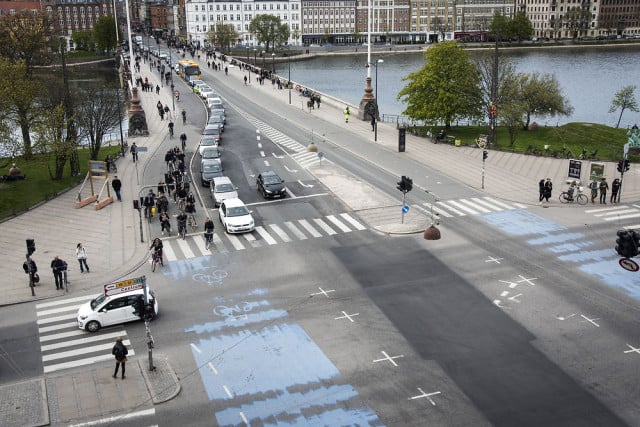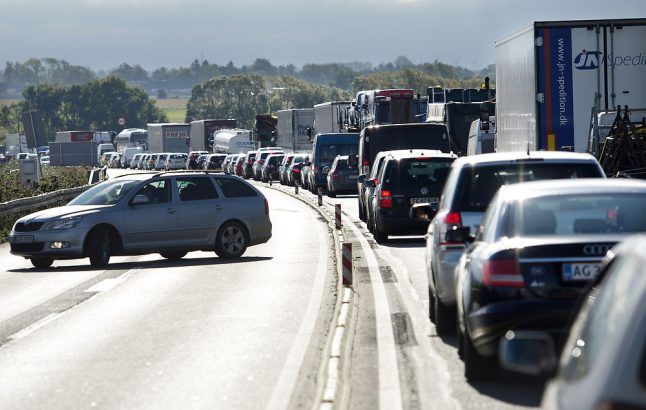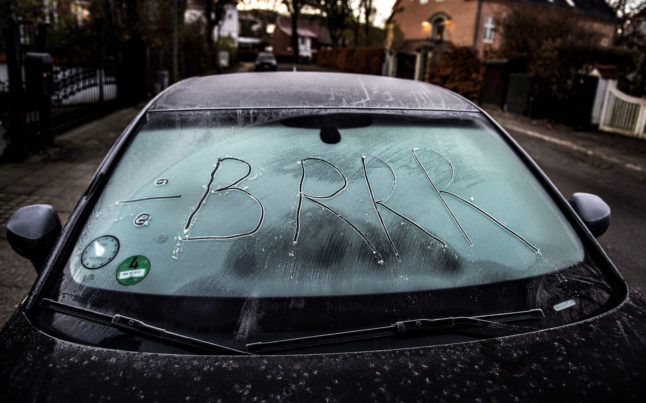We put the question to our readers in Denmark. The response was emphatic, and may make for uncomfortable reading for Danish drivers.
Here’s what you had to say. Thanks to all who responded.
‘No respect for other drivers’
Are Danish drivers really that bad? We asked you to explain in a few lines.
The most common response we received to this question was a resounding ‘yes’.
“They are really poor and seriously bad,” said Carlo Mazur, adding that he felt there was “no respect for other drivers”.
“They never use the indicator, (which is) super dangerous, and always drive through the yellow and even red light,” Z. Albert from Copenhagen said, echoing the sentiments of the chairman of the Danish Police Union.
Another reader, who gave her name as Maria, hit out at “constant speeding, disregard for the traffic regulations and inability to acknowledge other drivers or pedestrians”.
“The bad drivers seem to fall into two categories,” claimed one reader, who wanted to remain anonymous.
“Those that saved hard and got so excited about owning a ridiculously expensive car (because of the tax) that they think they know everything. These are the ones that run the red lights, speed, generally behave like they own the road,” they wrote.
“The other category are those who couldn’t afford to own a car for a long time (because of the tax) and so weren’t that bothered about keeping up their skills. These are the ones who turn without looking, don’t indicate and randomly hit the brakes because there is a car coming the other way,” the commenter added.
Motorway lane discipline is another area in which many found Danish drivers lacking.
“I once saw someone go from the fast lane, onto the hard shoulder, undertake several cars, come back onto the motorway and move over the fast lane again. He got ahead of two cars,” said Sarah Shaw, who lives in Roskilde. Shaw also said she regularly experiences reckless lane changing — often without indicating — during her daily commute.
“Lack of understanding of the ‘fast lane’ and therefore there’s a tendency to occupy the left lane several kilometres before needing to make a left turn, despite faster drivers trying to get past,” wrote James Amstutz, who lives in Aarhus.

File photo: Sofie Mathiassen/Ritzau Scanpix
Amstutz added that, on roundabouts, many have “no idea how to use a two lane roundabout, the majority having no qualms with taking the third exit from the outside lane, meaning that the inside lane is utterly unusable and/or dangerous.”
This was just one amongst many comments decrying poor use of roundabouts by drivers in Denmark.
A few of you stood up for Danish drivers, though, saying they did not deserve a bad reputation for their road etiquette.
“From my experience, in general Danish drivers seem better than American and German drivers and a lot better than Italian, Mexican and Israeli drivers,” said Adam Ackerman, who lives in the south of Denmark.
“I was impressed that the majority of the people obey the speed limit. I am Portuguese and we never drive at speed limit, always above,” added Marco Carneiro.
What's the most annoying thing drivers in Denmark do?
“They tailgate stupidly close, overtake at the most dangerous moments including on blind corners. They suddenly pull out in front of you without looking…” said Phillip Salisbury, who lives in northern Zealand.
“They decide to suddenly brake and turn before indicating and without looking in their mirrors. No spatial awareness at all. No consideration for anybody except themselves. They hate driving behind others, always have to be in front causing chaos. The list is endless,” Salisbury continued.
Not leaving adequate space for other drivers was a source of anger for many, notably cutting in front of others on motorways.
“I had several situations where I suddenly had to brake overtaking a truck because another car was squeezing in in front of me and my safety distance to the car ahead of me was gone,” said Frederike Molt.
“Speeding, tailgating and rude behaviour, will not let you out from a side road or other driveway,” Mazur added.
Others also pointed out a perceived lack of politeness on the roads in Denmark.
“I’ve lost count of the number of times I’ve given way to a Dane with absolutely no acknowledgement of thanks whatsoever! It seems to be worse in Copenhagen with the over 60s seemingly being the main culprits. Maybe it’s just me being overly British and used to more courteous driving,” Mark Chapman said.
What are the best tips for people driving in Denmark?
“Watch out for people speeding especially on back roads,” Adam Ackerman wrote.
“Accept that most Danes probably don’t even know that they are being rude. It’s just what they are used to and have been taught. Try not to get too frustrated by it (like I obviously do!),” Chapman said.
Mazur said his best advice was to “take the train or bus”.
READ ALSO: The Danish habits that are just impossible to shake off



 Please whitelist us to continue reading.
Please whitelist us to continue reading.
Danish drivers aren’t as inconsiderate as described here. On my daily commute the speeds are low on the motorway, so not too much crazy stuff happens. The worst is those vultures who wait until the last second to find a hole in the queue and jump in instead of queuing up like everyone else. It creates a predatory atmosphere where one has to drive too close to the car in front and seems to put everyone a bit on edge.
IF…you think its bad in Denmark….try driving in Latvia..! Where Russians think they own the road, with their suvs and their big Mercedes ! Even though it is ” supposedly illegal” not to talk on mobile phones when you drive there …NO ONE cares !IF you leave 1 meter between you and the person in front…there is always some clown who will try and push his way in ..!!!The roads in Riga are pure crap ! Because of the out of control corruption here !